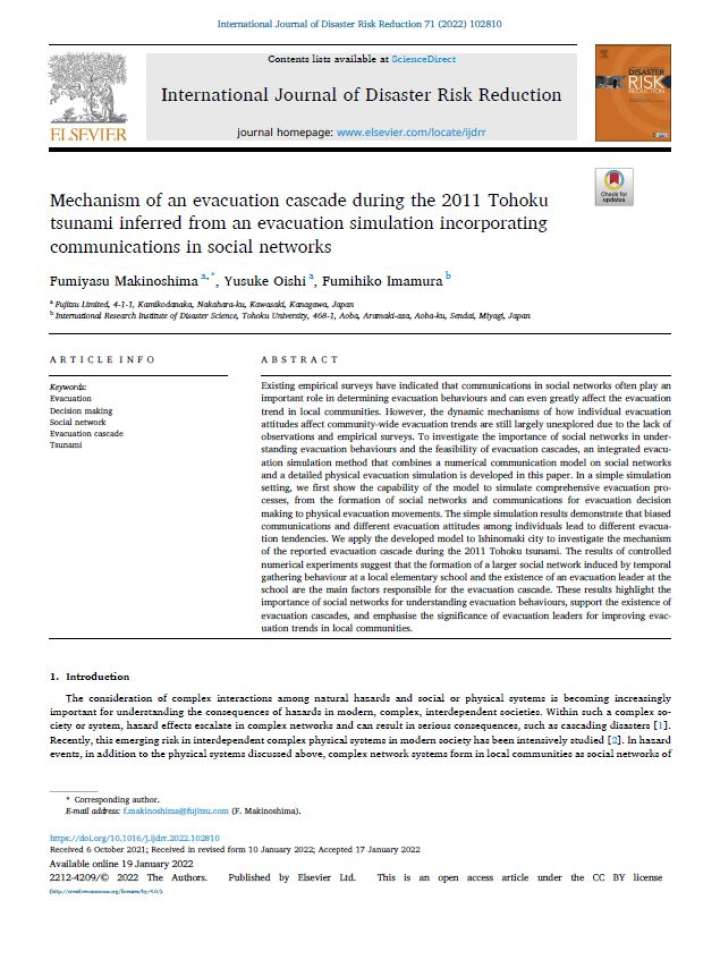Mechanism of an evacuation cascade during the 2011 Tohoku tsunami inferred from an evacuation simulation incorporating communications in social networks
To investigate the importance of social networks in understanding evacuation behaviours and the feasibility of evacuation cascades, an integrated evacuation simulation method that combines a numerical communication model on social networks and a detailed physical evacuation simulation is developed in this paper. In a simple simulation setting, we first show the capability of the model to simulate comprehensive evacuation processes, from the formation of social networks and communications for evacuation decision making to physical evacuation movements.
The simple simulation results demonstrate that biased communications and different evacuation attitudes among individuals lead to different evacuation tendencies. We apply the developed model to Ishinomaki city to investigate the mechanism of the reported evacuation cascade during the 2011 Tohoku tsunami. The results of controlled numerical experiments suggest that the formation of a larger social network induced by temporal gathering behaviour at a local elementary school and the existence of an evacuation leader at the school are the main factors responsible for the evacuation cascade. These results highlight the importance of social networks for understanding evacuation behaviours, support the existence of evacuation cascades, and emphasise the significance of evacuation leaders for improving evacuation trends in local communities.
Explore further
